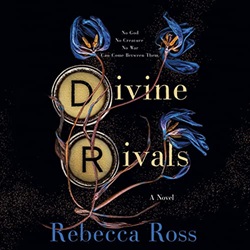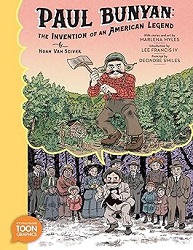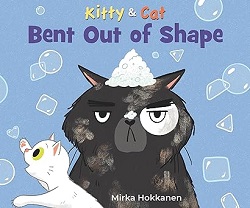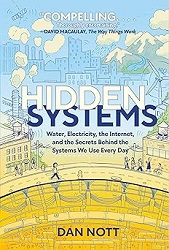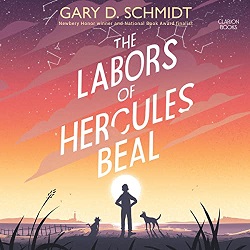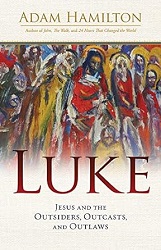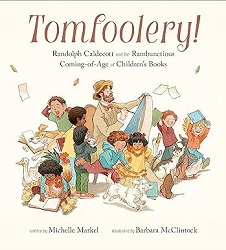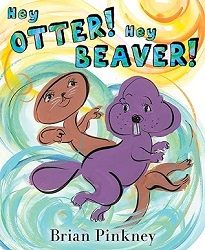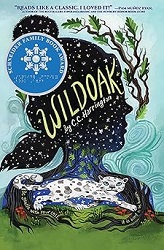Review of Divine Rivals, by Rebecca Ross
by Rebecca Ross
read by Rebecca Norfolk and Alex Wingfield
Macmillan Young Listeners, 2023. 10 hours, 50 minutes.
Review written December 28, 2023, from a library eaudiobook.
Starred Review
2023 Sonderbooks Stand-out: #1 Teen Speculative Fiction
2023 CYBILS Award Finalist, Young Adult Speculative Fiction
Okay, before I start talking about this awesome book, I need to digress because I was reminded of how much I love stories where a couple falls in love via letters.
The example most people know about is the movie “You’ve Got Mail,” but one of my favorite Young Adult Fantasy novels, Crown Duel, has a similar set-up in a fantasy kingdom. I like this kind of romance so much, I have an unfinished novel fragment where I attempted to retell “You’ve Got Mail”/Pride and Prejudice with the letters happening in a fantasy kingdom by way of a magical diary.
Well, Rebecca Ross pulls off this plot much more effectively, expertly connecting our main characters through letters typed on magical typewriters. Like the other books, we start with an enemies-to-lovers trope. Like the others, the guy knows before the girl whom he’s corresponding with and tries to change that “enemy” perspective, because he’s figured out he’s falling in love with the friend he’s writing to.
And yes, the slow-burn romance is exquisite! I’m convinced that a part of why I love this scenario is that as an INFJ, I dislike small talk, love the written word, and love how with letters you can really get to know people. Iris, our main character in Divine Rivals, mentions that we all clothe ourselves in armor, but with letters, we can take off small pieces of that armor and share our hearts.
Iris has been working in a newspaper office, competing with her rival, Roman Kitt, to win the position of columnist and be able to put away the obituaries for good. But when her mother dies, she misses a deadline and loses the columnist job. Iris decides there’s nothing more for her in the city, and she signs up to become a war correspondent – hoping to find her brother Forrest, who went off to fight for the goddess Enva and promised to write, but never did. Iris had begun her magical correspondence with Roman by typing letters to Forrest and putting them in her wardrobe.
This fantasy world is expertly drawn. Without a slog of back story, we listen to the two characters writing to each other about the god and goddess who woke up after hundreds of years and plunged the human world into war. The war is carried out with the technology of World War I from our world — think trenches and poison gas. Refreshingly, some social factors are not like our world, with Iris encountering two women married to each other and soldiers who are women, and she finds that unremarkable.
A lot of the action takes place at the front. It reads like a historical novel of World War I with our heroes falling in love during wartime.
And, oh, the romance! There’s a meeting of minds before the meeting of hearts and bodies, and that always wins me over. In fact, I’ve had to come to terms with realizing that’s my own private fantasy – to some day fall in love via letters (possibly in electronic form). I’m sure it was being influenced by this book that motivated me the day after I’d finished it to *not* shut down a stranger who slid into my direct messages on Twitter, asking me three times in two days how I was doing. Well, I very quickly saw that was a major mistake. But the fact remains that I have many dear friends in my life, both men and women, whom I have gotten close to through the written word, from letter-writing to my friend who moved away as a kid to emailing now. In this book’s case, it was lovely to enjoy an example where the close friendship built in letters went hand-in-hand with romantic compatibility. I’m well aware that doesn’t always happen, but so much fun to read a story where it does.
Now, a word of caution. The only thing I didn’t like about this book was the cliffhanger ending. But there’s where I lucked out! And if you haven’t read this book yet, you too can luck out! You see, the sequel, Ruthless Vows was published two days after I finished reading the book. (And it’s said to be a duology, so the sequel should not have a cliffhanger ending.) Even better, I order books for our public library system. The audio version of the sequel had 49 Notify Me tags in Libby (the ebook had 81), and so of course I ordered it. But my big score was as soon as it got ordered, I went to my own Libby account and checked out a copy! I don’t often take advantage of this insider knowledge, but this time it made me very happy.
And yes, the audiobook version is wonderful, so I’m happy to get to listen to the next book, too. They have British accents and are a delight to the ear. I’m not sure if I will get the sequel finished before 2023 ends, but either way I have no doubt it will be a Sonderbooks Stand-out — either for 2023 or 2024.
I picked up this book because every week since it’s been published, we needed more ecopies at the library because of all the holds. Once I finished reading for the Morris awards, I decided to find out what the fuss was all about. I’m so glad I did!
Find this review on Sonderbooks at: www.sonderbooks.com/Teens/divine_rivals.html
Disclosure: I am an Amazon Affiliate, and will earn a small percentage if you order a book on Amazon after clicking through from my site.
Disclaimer: I am a professional librarian, but the views expressed are solely my own, and in no way represent the official views of my employer or of any committee or group of which I am part.
What did you think of this book?
